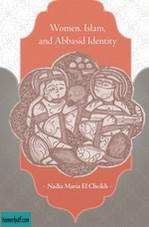Women, Islam, and Abbasid Identity
该资源由用户: 魂魄凌霜 上传 举报不良内容

尊敬的读者:
欢迎您访问我们的网站。本站的初衷是为大家提供一个共享学习资料、交换知识的平台。每位用户都可以将文件上传至网盘并分享。
然而,随着用户上传的资料增多,我们发现部分不宜或版权问题的书籍被分享到了本站。
为此,我们已经关闭了分享入口,并进行了多次书籍审查,但仍有部分内容未能彻底审查到位。
在此,我们恳请广大读者与我们共同监督,如发现任何不宜内容,请 点击此处 进行举报,我们会第一时间处理并下架相关内容。
希望我们能共建一个文明社区!感谢您的理解与支持!
猜你喜欢

Julia as a Second Language - Erik Engheim
View more
Julia as a Second Language - Erik Engheim

Creating HTML5 Animations with Flash and Wallaby - Ian McLean
View more
Creating HTML5 Animations with Flash and Wallaby - Ian McLean

《数据分析实战:基于EXCEL和SPSS系列工具的实践》纪贺元 数据分析与决策技术丛书文字版
View more
《数据分析实战:基于EXCEL和SPSS系列工具的实践》纪贺元 数据分析与决策技术丛书文字版

《我看电商3:零售的变革》黄若 文字版
View more
《我看电商3:零售的变革》黄若 文字版

《万历十五年欧洲那些事儿》马瑞民珍藏版
View more
《万历十五年欧洲那些事儿》马瑞民珍藏版

《关乎天下》关明生全新增订版
View more
《关乎天下》关明生全新增订版

《Java程序员修炼之道》Benjamin J. Evans文字版
View more
《Java程序员修炼之道》Benjamin J. Evans文字版

《嬗变》呼延云全新修订版
View more
《嬗变》呼延云全新修订版

《自控力:斯坦福大学最受欢迎的心理学课程》凯利·麦格尼格尔文字版
View more
《自控力:斯坦福大学最受欢迎的心理学课程》凯利·麦格尼格尔文字版

Server Side Swift with Kitura 2nd Edition - Chris Bailey & David Okun
View more
Server Side Swift with Kitura 2nd Edition - Chris Bailey & David Okun

Scrum CheckList - Boris Gloger
View more
Scrum CheckList - Boris Gloger

《人类存在的意义:社会进化的源动力》爱德华·威尔逊中文版
View more
《人类存在的意义:社会进化的源动力》爱德华·威尔逊中文版



